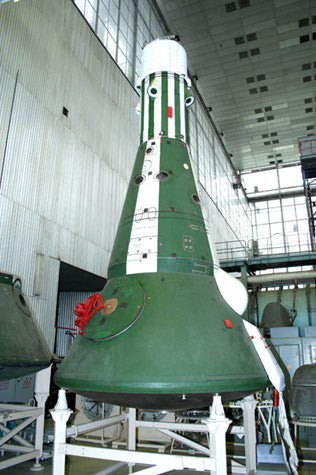[/caption]
An international company announced plans to launch a commercial space venture using spacecraft designed for a once classified Russian space program. Excalibur Almaz Limited plans to offer week-long orbital space flights beginning as early as 2013 with updated 1970’s era Reusable Return Vehicles, designed for flying to the USSR’s top-secret Almaz space station. Excalibur Alamaz’s press release said they would be “taking a big leap beyond the sub-orbital flight market targeted by most other private space companies.”
Excalibur Almaz (EA) is currently updating the spacecraft to conduct crew and cargo space missions for private individuals, corporations, academic institutions and national governments.
JSC MIC NPO Mashinostroyenia (NPOM) of Russia originally built the spacecraft and EA has purchased both the rockets and modules for the Almaz space station, which was never flown. The RRVs went through nine flight tests, with two RRVs flown to orbit several times.
EA Founder and CEO Art Dula said, “Through cooperation with NPOM and with the support of leading space contractors around the world and an exceptionally strong management and advisory team, EA is in a unique position to initiate a new era of private orbital space exploration.”
Cosmonaut Vladimir Titov, advisor to EA in Russia, said, “With this announcement, the dream of private orbital space exploration may become a reality in the very near future.”
Former NASA astronaut LeRoy Chiao, a current member of the Augustine Commission, is the Executive Vice President for EA.
EA is headquartered in Isle of Man, British Isles, and support contractors are located in Moscow, Tokyo, Houston and Los Angeles.
EA’s spacecraft will consist of two parts: an RRV and an expendable service module to provide crewmembers with room to comfortably operate during spaceflight. EA said they will “update the Almaz RRVs with flight-proven technologies where appropriate, while retaining tested legacy systems to ensure safety and economy of operation. A critical feature of the RRVs is their reusability, which will reduce logistical, overhead and program costs for commercial access to space.”
EA plans for its spacecraft to be compatible with a number of launch vehicles and capable of being launched from worldwide sites.
Excalibur Almaz website.
Source: EA Press Release


I thought the Almaz did fly, but under the cover of the Salyut program?
Yep – the Russians sure do build ’em ugly.
It is an ugly beast of a capsule, but I imagine it’s reliable. At the very least, I hope they give it a different paint scheme.
Interesting. I’ve never heard of Almaz, but it seems they indeed explain the Salyut program, or at least the first part of it. One can recognize the return vehicle.
[I also note that Almaz, “the flying fortress”, is the station that is tied to the claim that a gun has been successfully tested in space, as discussed over at Bad Astronomy.
“OPS [Orbital Piloted Station] was equipped with high speed aviation 23 mm cannon by A.Nudelmann KB. The gun was pointed to the target by revolving the whole station. This weapon proved to work in space environment. In one of flights, just before the braking impulse to the station, flying automatically, the gun ammo was shot out. The cannon fired accurately, and all the constructions appeared reliable and rigid. ” (3)”]
The ugliness of the TKS is explained a little by the descent profile. Both the top part and the middle part contains expendable retro-rockets (for descent trajectory insertion respectively soft landing).
Other noteworthy things:
On the negative side is that the TKS was never tested with crew after a decision, and originally was rated for 31 hours only (I assume for 3 people as Apollo (see below); not declared).
On the positive side is that it is claimed to be the legacy technology of 4 Mir units and 2 ISS elements, and that it has Apollo-like legacy of descent design (up to the final retro-rockets) and dimensions.
Oh, as always Wikipedia has the better material. Turns out TKS was indeed a ferry for 3 persons, but 30 % smaller than Apollo (which was inhabited longer periods of course).
Ugly???
I love it. It’s beautiful. Great colour.
@ HeadAroundU…Are you referring to the photo on the left or the one on the right?
lol(ing) @ you guys.
the soviets did love that green color. even now, you’ll find the exact same color painted onto old hospital walls and the interiors of government buildings.
western-style “remont” is all the rage there these days so the soviet green is slowly being replaced.
On the left. That beautiful emerald green and white ship with simple and cool design.
How does western-style remont look like?